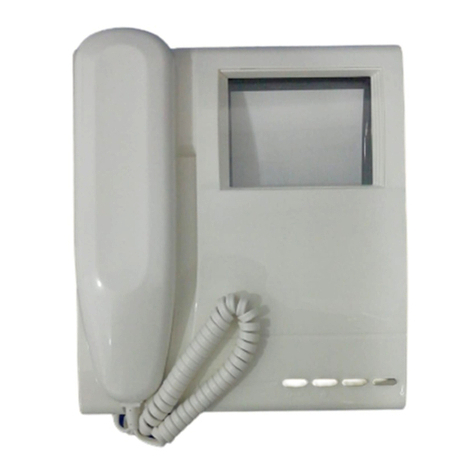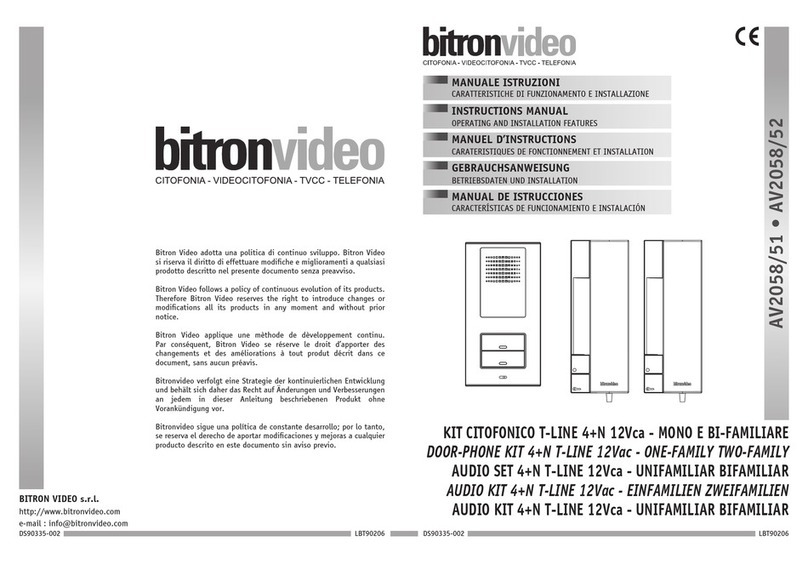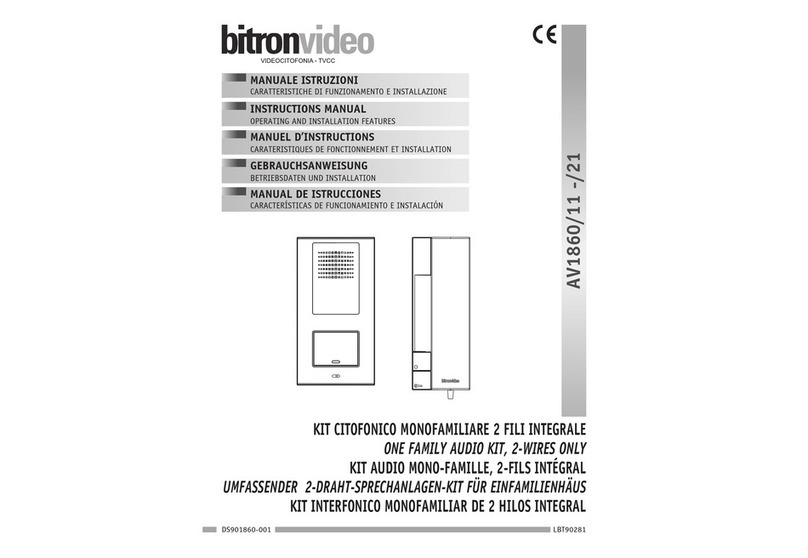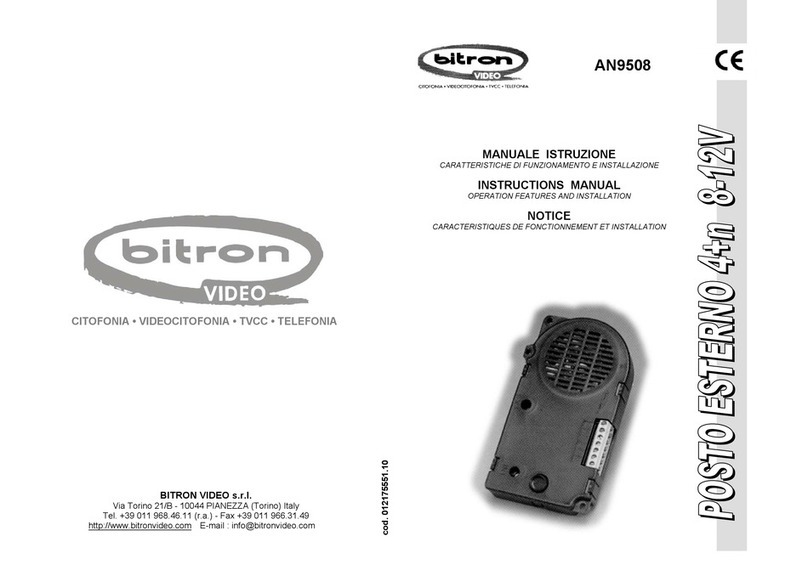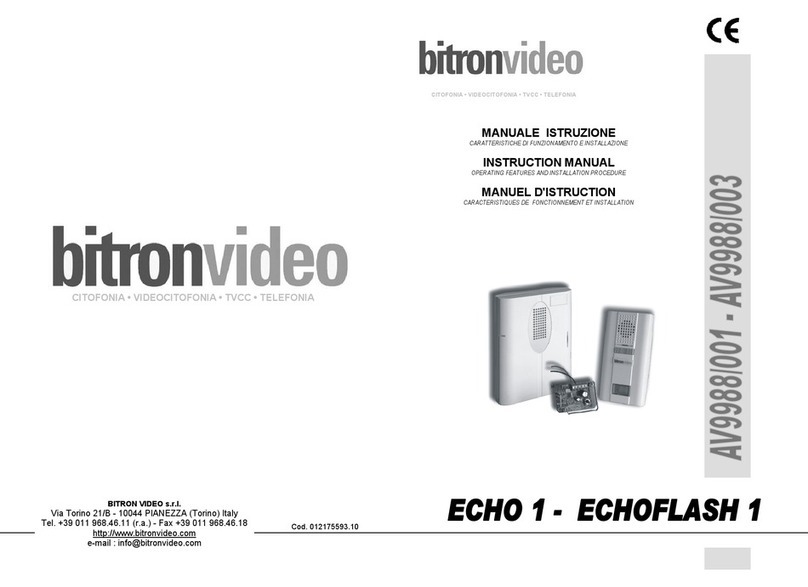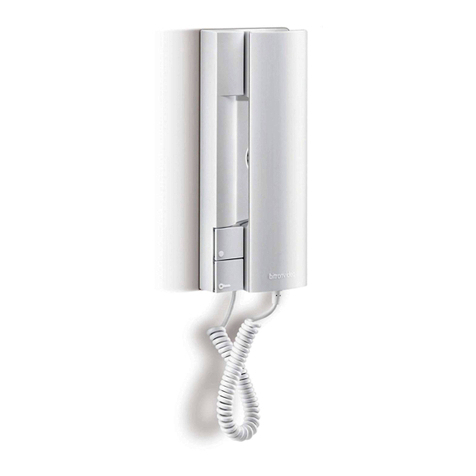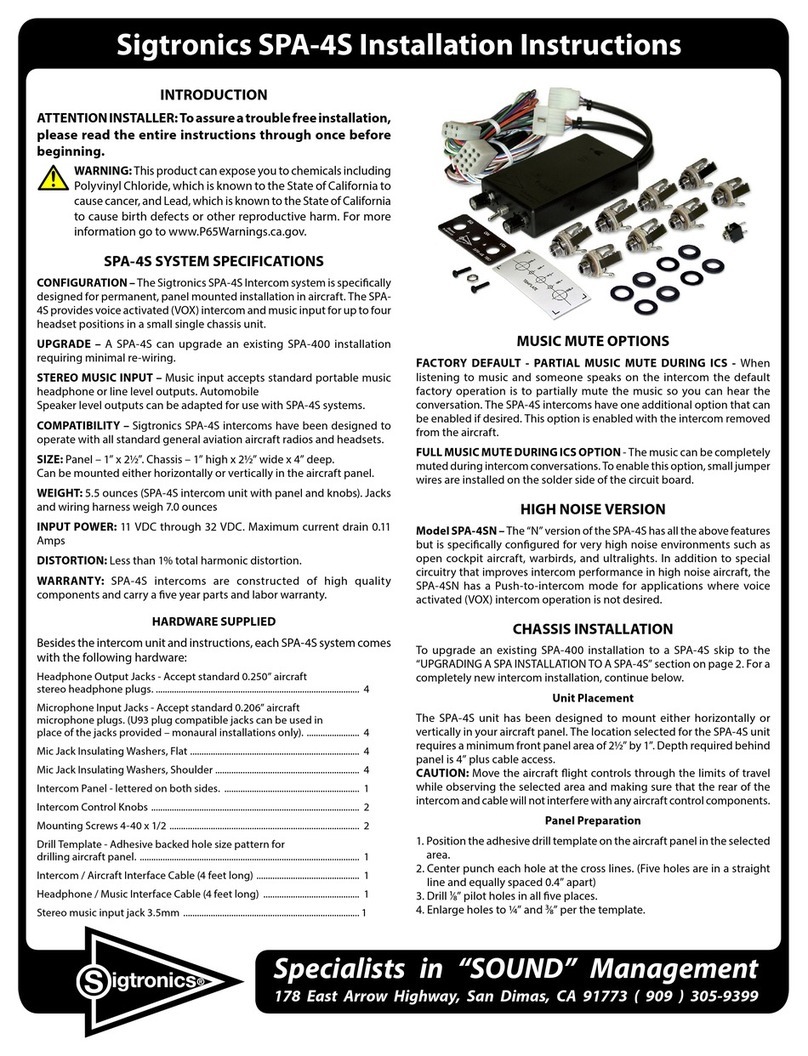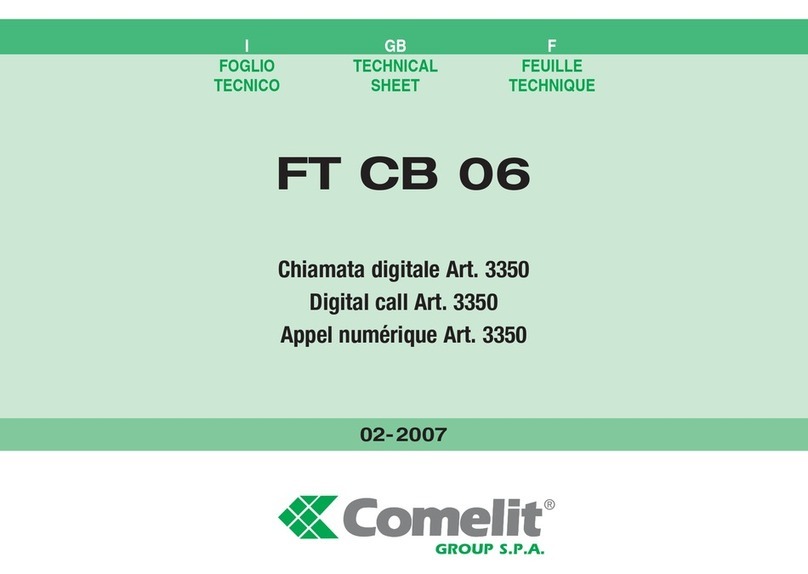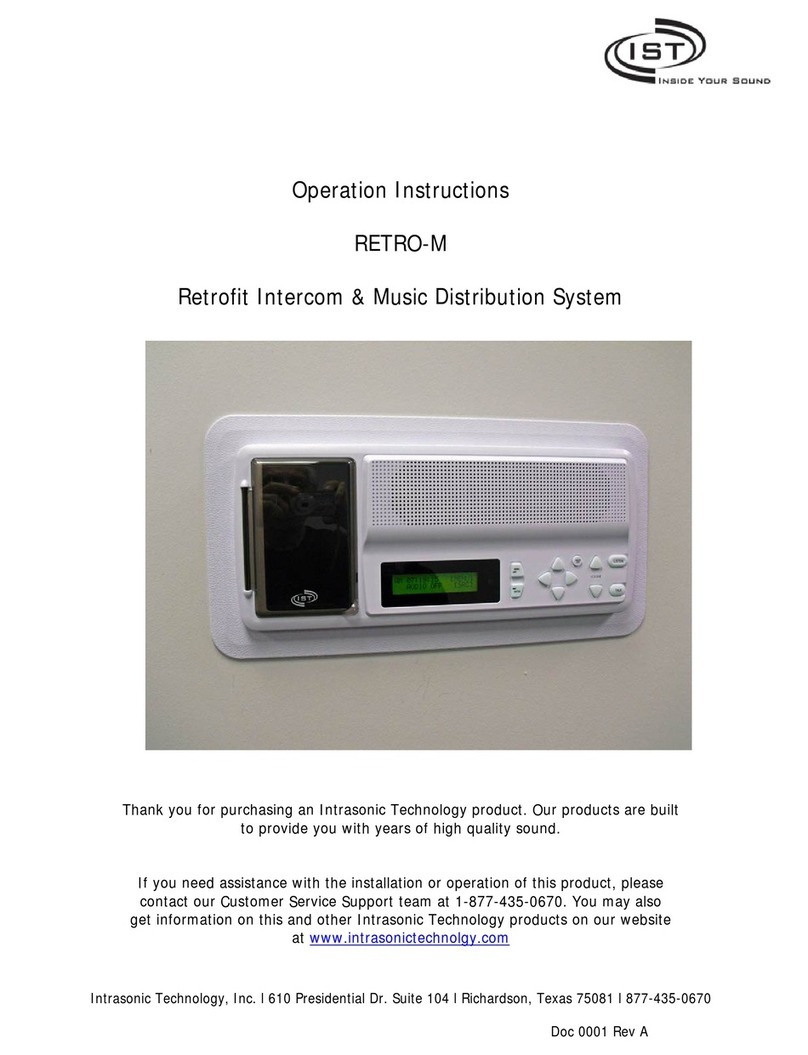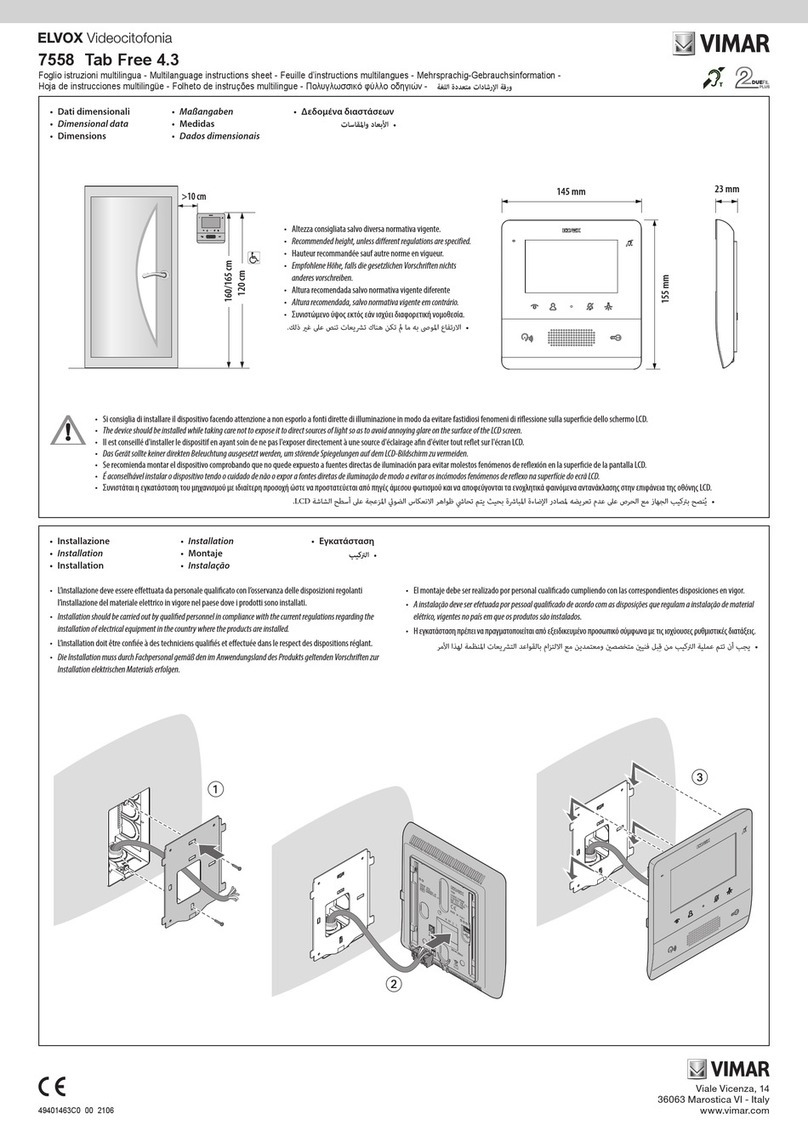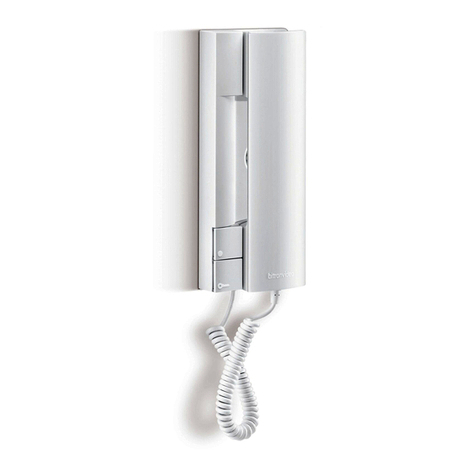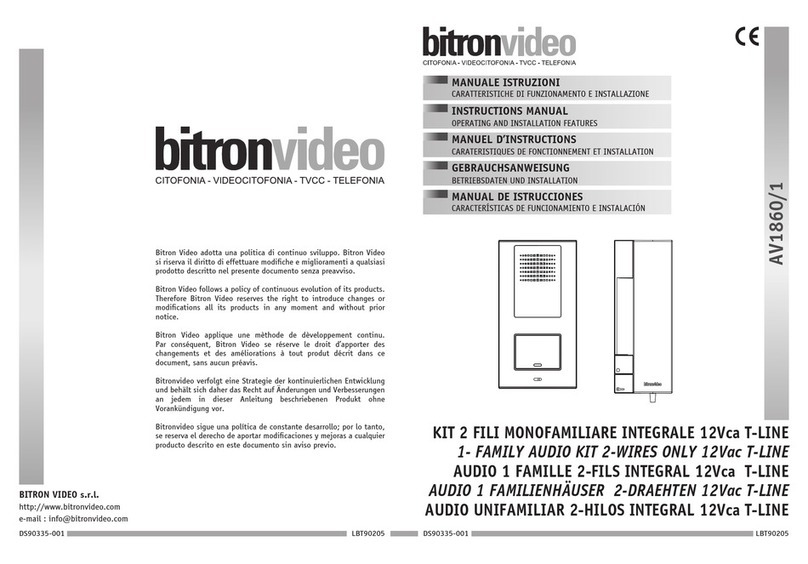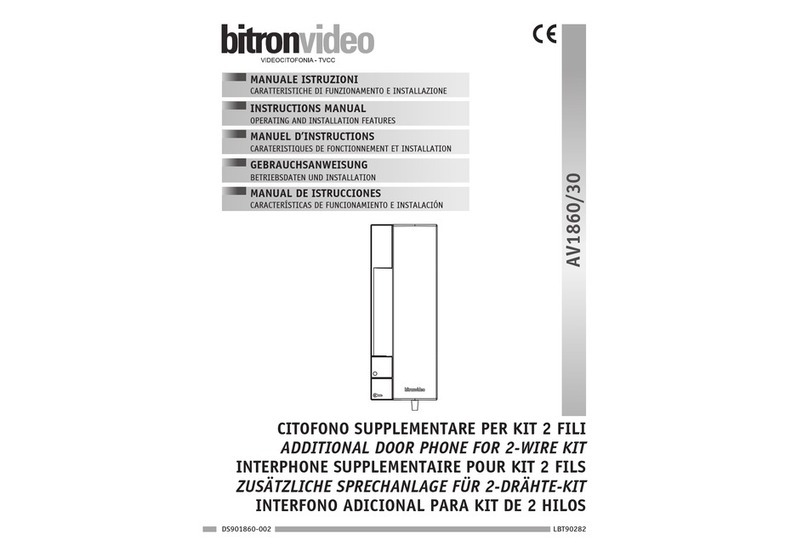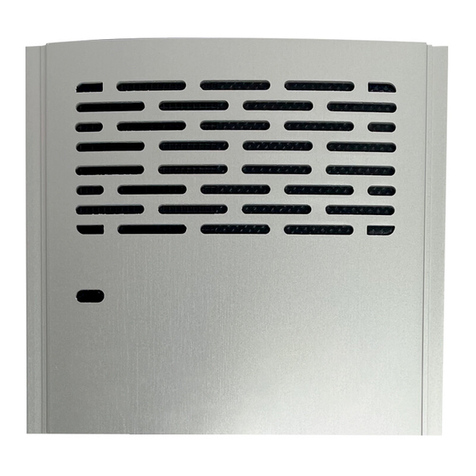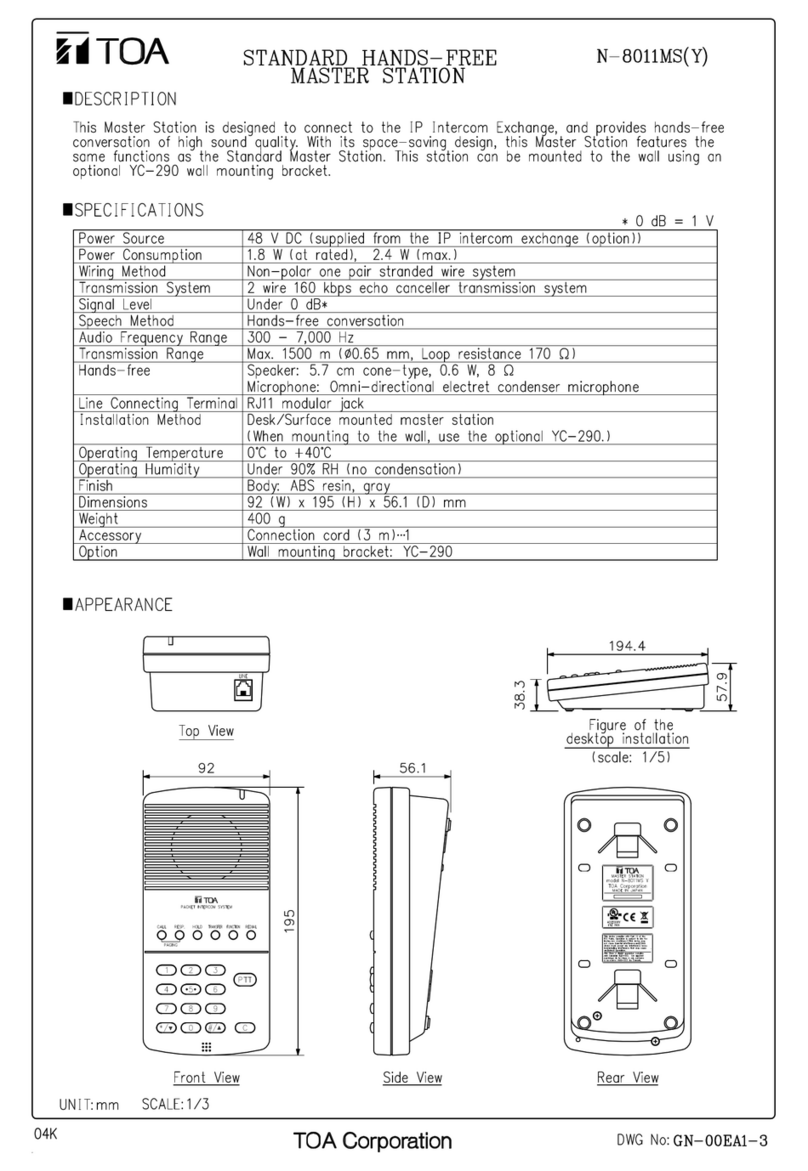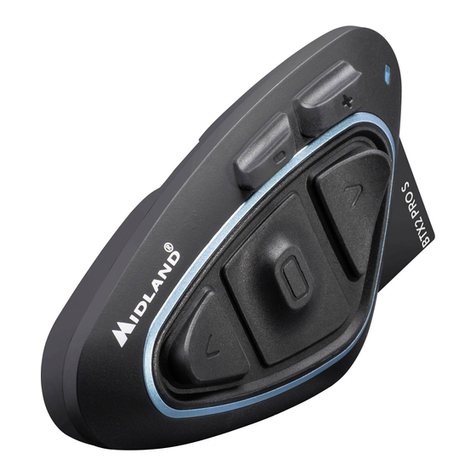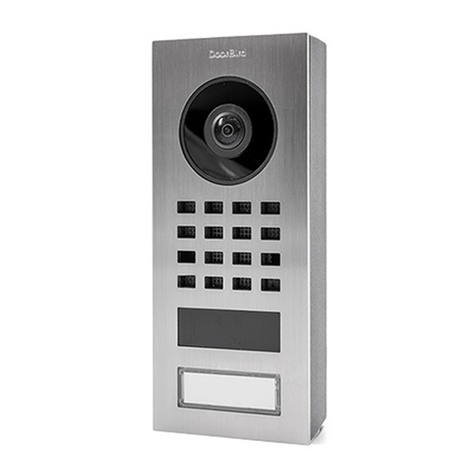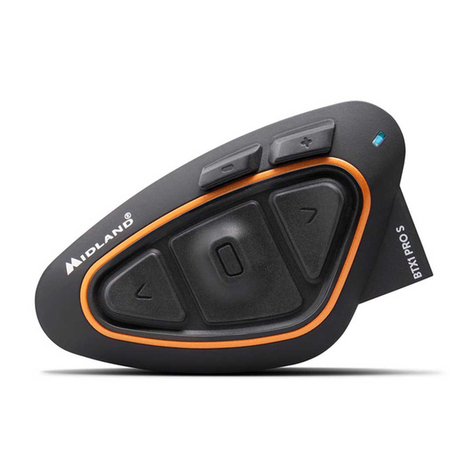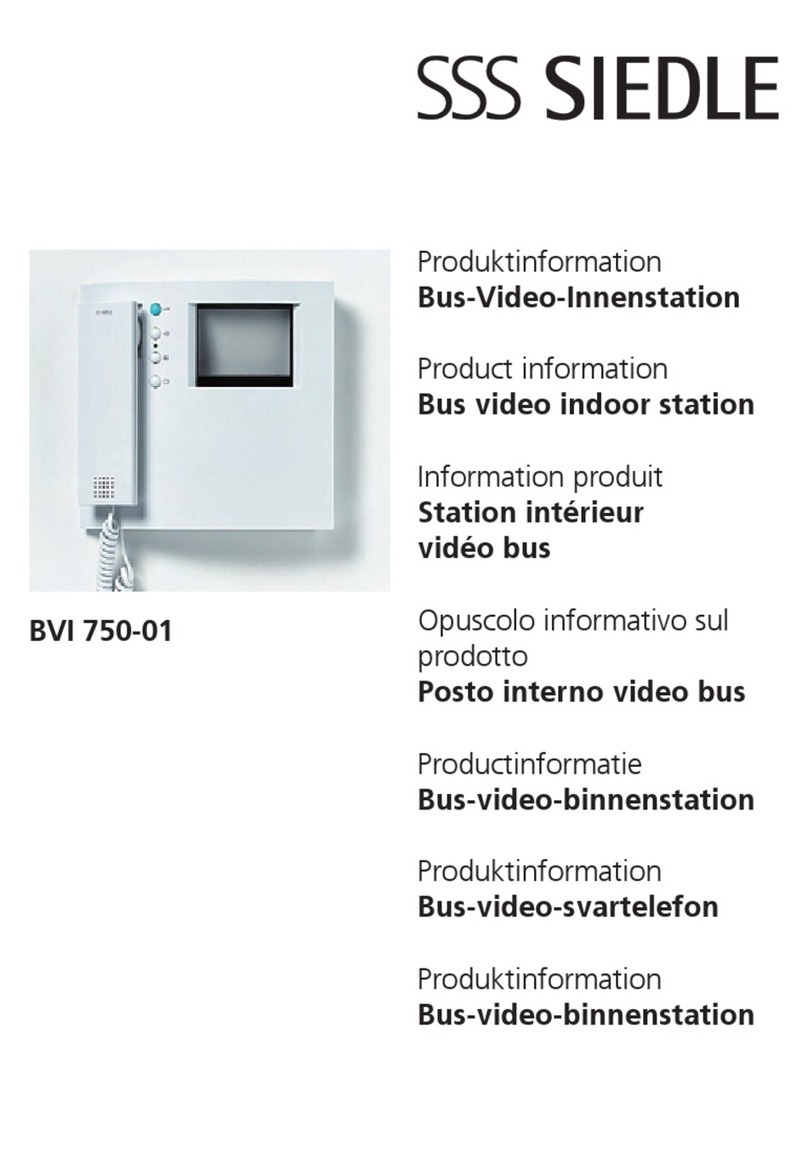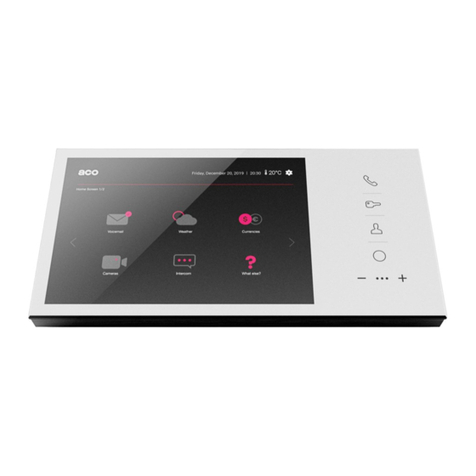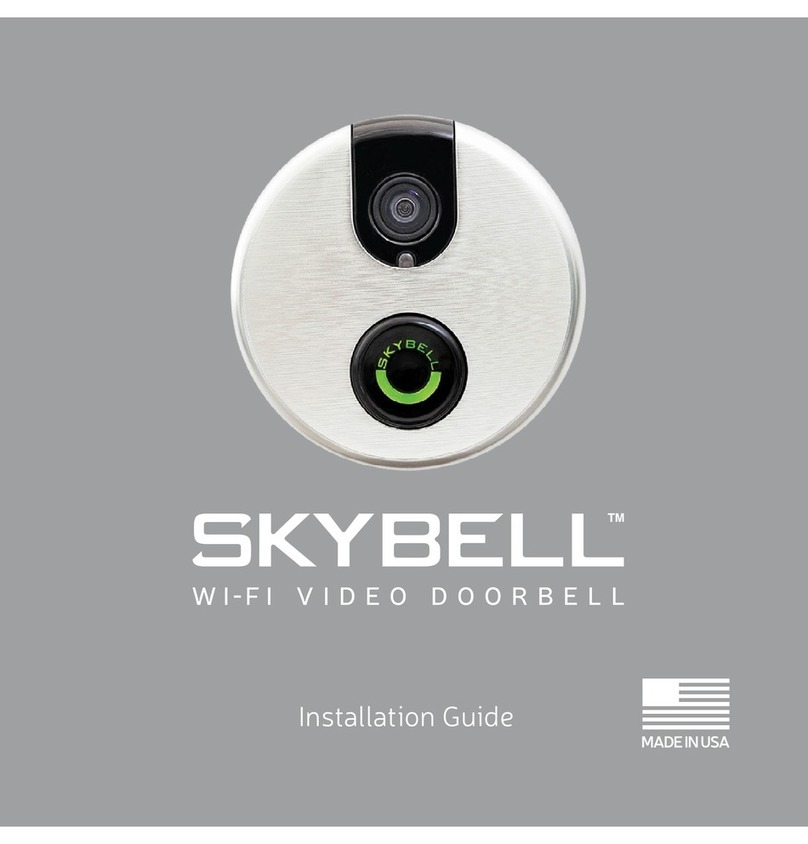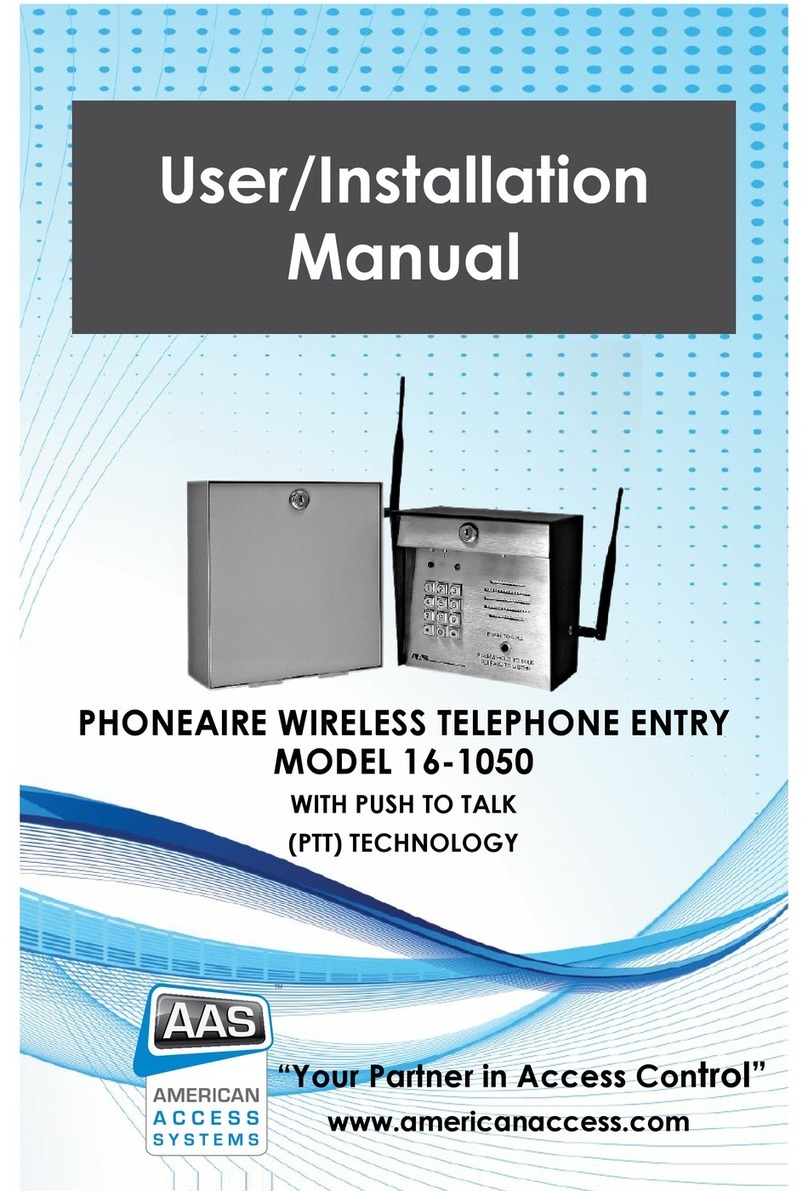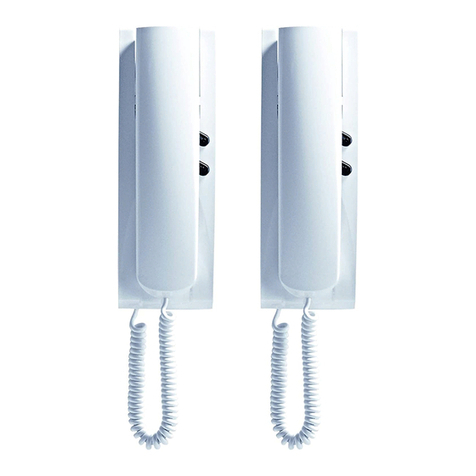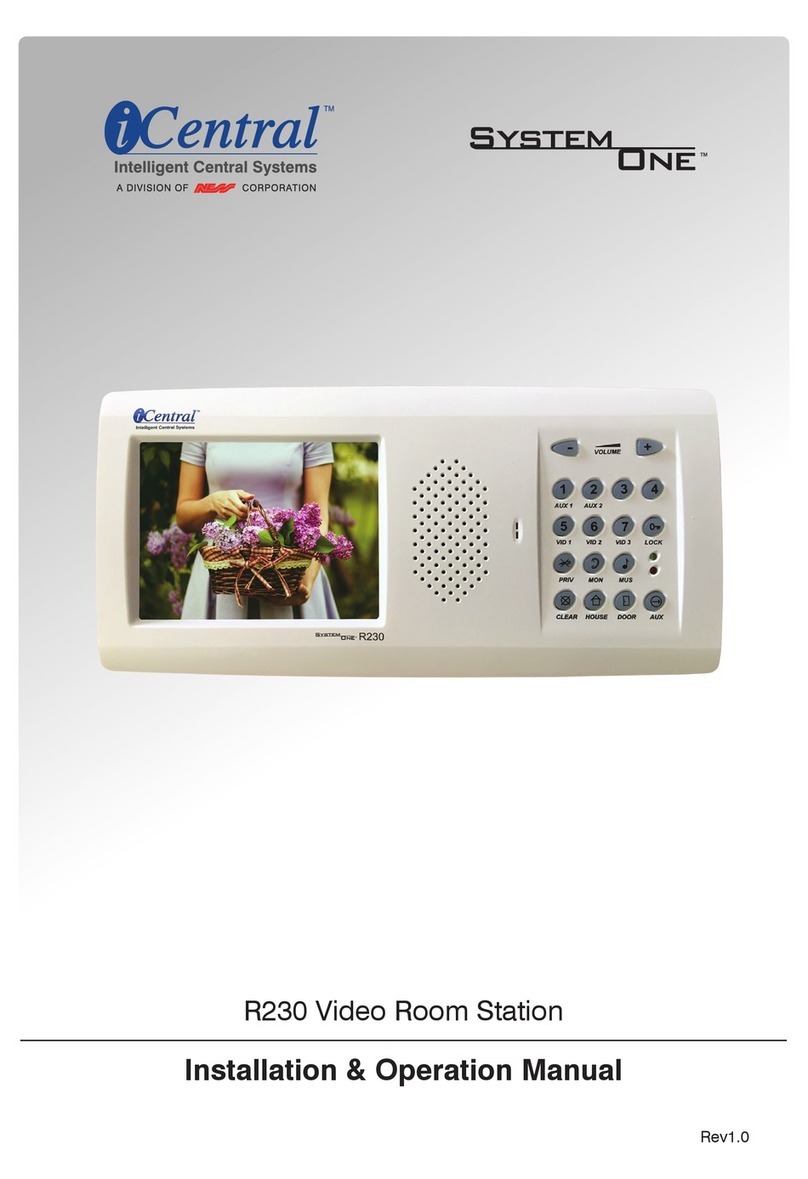
- In qualsiasi momento (ad eccezione di quando c’è una conversazione con l’esterno), qualsiasi utente interno è in grado
di chiamare il centralinista, semplicemente premendo il tasto apriporta, situato sul proprio citofono o monitor.
- Anche il centralinista può chiamare ogni utente in qualsiasi momento, semplicemente digitandone il codice e premendo
il tasto .
- Dopo aver effettuato una chiamata e non avendo ottenuto risposta, se il centralinista desiderasse chiamare un altro
utente (quando il LED emette luce gialla), allora dovrà riagganciare per un attimo il microtelefono, in modo da riportare
il sistema a riposo (quando il LED diventa verde), prima di effettuare la nuova selezione.
GESTIONE PARZIALE
Posizionando il deviatore SW2 in posizione P si ha la gestione PARZIALE del sistema.
- Il LED di stato (fig. 1) è acceso ed emette luce verde lampeggiante.
In questa situazione, ogni chiamata effettuata dalla pulsantiera esterna, raggiunge direttamente il citofono chiamato che
suona con nota quadritonale.
Nel momento in cui si effettua una chiamata da un posto esterno, il LED di segnalazione del
centralino inizia a lampeggiare con luce rossa e per tutta la sua durata, il centralino non può ne
chiamare ne essere chiamato dagli utenti interni.
- In qualsiasi momento (ad eccezione di quando c’è una conversazione con l’esterno), qualsiasi utente interno è in grado
di chiamare il centralinista, semplicemente premendo il tasto apriporta, situato sul proprio citofono o monitor.
- Anche il centralinista può chiamare ogni utente in qualsiasi momento, semplicemente digitandone il codice e premendo
il tasto .
- Dopo aver effettuato una chiamata e non avendo ottenuto risposta, se il centralinista desiderasse chiamare un altro
utente (quando il LED emette luce gialla), allora dovrà riagganciare per un attimo il microtelefono, in modo da riportare
il sistema a riposo (quando il LED diventa verde), prima di effettuare la nuova selezione.
Solo se non c’è nessuna conversazione in corso tra la Pulsantiera Esterna ed un utente, il centralino
può fare e ricevere chiamate dagli utenti.
Il Tasto AUX ed il deviatore DER LU, posti sul centralino, non sono utilizzati !
Per accedere e scrivere sulla rubrica collocata accanto al centralino, svitare le quattro viti di fissaggio evidenziate in fig.3,
estrarre la rubrica, compilarla debitamente e rimontarla con le quattro viti.
I collegamenti elettrici si effettuano nell’apposita borchia di collegamento come indicato in fig. 4 -5
Congratulations!
We thank you for choosing the new digital switchboard Bitron Video CDP 82, compatible with door phone and video door
phone systems €BUS of Bitron Video.
This switchboard, installed and connected between the main control boards and the upright column, allows the operator to
“filter” possible calls coming from outside, and allows each user to call the operator, and to the operator to call any user .
Before installing the device, read this Manual carefully, to make yourself acquainted with the use procedures.
The switchboard has two different operation states, that can be selected by the operator:
NIGHT mode
- The state LED (fig. 2) is Off
- In this mode, the switchboard if Off, and the system operates as if it did not exist, thus allowing the visitors to call the
users directly. These can answer and open the door.
- The user cannot call the switchboard, nor can the switchboard call the users.
- In this condition, if we press the key we can activate the switchboard in DAY mode
DAY mode
The DAY mode has two different operation modes (TOTAL and PARTIAL MANAGEMENT) to be selected through the
deviator SW2 [drwg.1]:
TOTAL MANAGEMENT
Positioning the deviator SW2 in position T we obtain the TOTAL management of the system.
- The state LED (fig. 1) is On: fixed green light.
In this situation, each call made from the external board is intercepted by the switchboard, that sounds with 4 tunes
(when a call comes from an external place, the signalling LED starts blinking with its red light, and remains active until
the board is able to converse).
- To have a dialog with the calling board, only press and hold pressed the key if we want to activate the
electric lock, only press the key
- If, after answering the call, we want to call a user, digit the corresponding code, followed by the key
- The LED emits a fixed red light, to indicate that the calling is being transferred, and after a few seconds a yellow light, to
confirm that the switchboard is waiting for an answer by the user who has been called.
- Now, if the operator wants to transfer the conversation with the external board to the user called (if this latter has
previously called the switchboard), only press the key to connect the user with the outside.
GB
NOTA
P T
#
#
NOTA
P T
*
RP
R
#
4 N. I. 012 175565 REV.10
3 N. I. 012 175565 REV.10







